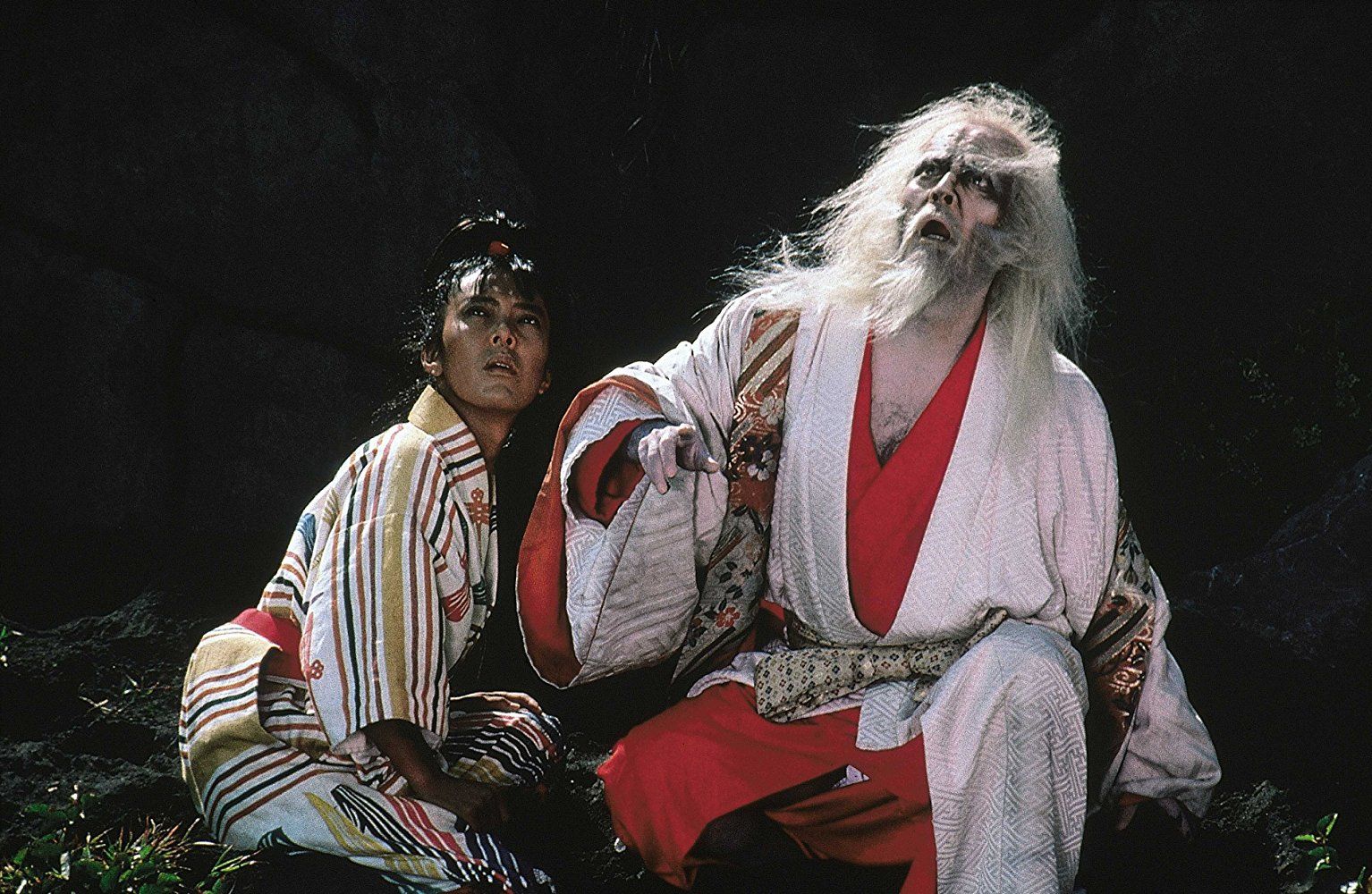Review: Ran (1985)
Often considered the last masterpiece of Akira Kurosawa’s long and celebrated career, this is about as grand in vision as cinema gets.

Often considered the last masterpiece of Akira Kurosawa’s long and celebrated career, Ran (1985) is an adaptation of Shakespeare’s King Lear (which was itself adapted from the older story of Leir of Britain) about as grand in its vision as cinema gets, but which succeeds in its ambitions – something that can be said for only a small group of films.
Lord Hidetora, a seventy year-old who has waged bloody war for fifty of those years, finally succeeding in uniting the surrounding lands under his rule, doses off to sleep amidst the company of his three sons and neighbouring warlords. A short time later he awakes in terror, having dreamt of walking through an endless field feeling completely alone in the world, and in what seems like a fit of relief at finding himself in the company of his three sons he decides to abdicate his kingdom to them. From there everything quickly unravels for Hidetora, the plot propelled forward by a fateful energy filled with violence, doom, and chaos (the film’s Japanese title roughly translates as “chaos”) over which he is powerless to stop as it manifests into reality the nightmare he awoke from.
The sudden narrative shift after Hidetora falls asleep alludes to his death, awaking in hell after reaching the end of his natural life – which has been characterised by ruthless, bloody war, we are told – in apparent triumph. Quickly after awaking he finds himself in a hostile landscape, a deceptive, personal hell on Earth that seamlessly continues on from his life before. As he descends into madness at witnessing the swift dissolution of his power, at first unable to comprehend his part in events, he is given a paradoxical, paranoid clarity which forces him to confront the suffering he has inflicted on others over his lifetime.
The on-screen depiction of Hidetora’s journey through hell is gripping, enabling the viewer to feel and empathise with the pain of his misfortune despite the character’s lack of obvious sympathetic qualities. The performance of Tatsuya Nakadai as Lord Hidetora fits perfectly within the film’s Shakespearean dramatic parameters, playing first a rigid, unblinking statue of pride and unwavering conviction who expects unquestioned obedience from all, then a figure of great pathos, overcome by despair and bewilderment as he falls deeper into misfortune. He is a character of grand dramatic dimensions. Nakadai convincingly imparts intelligence, fatherly love, and the violent convictions of a militaristic ruler into the role, along with a foolish naivety that shows itself fleetingly and subtly through the cracks of his pride. Also effectively conveyed in the performance is the wavering quality of Hidetora’s sanity, cut free from his senses and zombified in horror at one moment, then brought suddenly and painfully back into mental clarity at the next. The impression achieved is that of a tragic figure from a medieval painting come to life, and it is a haunting portrayal that outlives the duration of the film.
Perhaps the only thing with a larger presence in the film than Lord Hidetora is the immersive, impressionistic, spiritual film world Kurosawa constructs, invoking a tone and atmosphere that seems to influence and engulf the people within it. Rather than being a static or neutral stage the diegesis becomes an active participator in events, a signifier of the spiritual forces that are suggested in the text as guiding and manipulating the fate of its hosts. The feeling created is that of the film world itself being a conscious entity with supreme, intelligent control over proceedings – in that sense, as well as signifying the spiritual, it can be felt as the director’s presence as auteur.
Interspersed throughout the film are cutaway shots of the sky, showing rolling clouds and morphing weather conditions as characters look on frightfully, suggestive of godlike involvement and the foreboding of further catastrophe. Long static shots are used as a camerawork staple, creating the impression that we are viewing the world through the eyes of the aforementioned godlike forces. This works to magnificent effect, enforcing the feeling of an invisible consciousness at work in the environment while placing the viewer at a removed distance from the characters, from where they feel helpless to intervene.
Kurosawa makes great use of sound, most notably in battle scenes where environmental sound cuts to silence and all we hear is a poignant and melancholy score over the bloodshed. Another powerful effect is achieved in several countryside scenes where natural sounds – crickets chirping, the wind howling – rise to the exclusion of all else at moments where panic and despair sets in on the characters onscreen. Both are done seamlessly enough to be almost transparent yet carry great effect, creating the sense of deafening silence, which works terrifically as a signifier of shock and horror.
Most of Kurosawa’s great films are shot in black and white, but Ran demonstrates the director's ability to use colour as a tool to generate ambience and meaning. A striking foreground colour palette of bright robes and banners (each son and his military forces colour coded in contrasting hues) sits against the grim tones of the landscape, creating visual contrast between the loud, emotional subjects and the quiet, subtly menacing forces felt in the world they inhabit.
Kurosawa makes several key references to Buddhism to represent an alternative to the chaos and suffering of war, most notably in the film’s final, symbolic shot. As Hidetora’s funeral procession passes by underneath the ruins of a castle he once burnt to the ground, we see a figure standing on a ledge above. We cut in close to see it is a blind boy we know to be one of Hidetora’s past victims (he is blind because the warlord had his eyes gouged out as a child), edging towards a precipice but stepping back at the last moment, dropping a scroll he is carrying. We cut to the scroll, showing an illustration of Buddha etched in gold ink, unnaturally illuminating the darkness around it.
The cliff threatening a sudden catastrophic end for the boy, we can take it as representing the ultimate precipice of warlike actions: nuclear holocaust. Previously we hear the boy explain how he has tried to practise the unconditional compassion encouraged through worship of the Buddha, but has struggled to forget the violence inflicted on him by Hidetora. The final shot of him stepping back from the ledge suggests he ultimately succeeded in overcoming his drive towards veangeance, and it has saved him from suffering a fate similar to Hidetora. Even as the world grows dark and foreboding as a result of war, the victims of war might be able to save themselves by refusing to pick up arms and retaliate in equal or greater measure, is one reading of the subtextual message the director might be aiming to impart.
Kurosawa appears to suggest that the victims of war hold the power to institute peace, a reading which is strengthened by an earlier speech delivered by Saburo, who proves to be Hidetora’s only noble son but refuses to flatter him in the same fashion as his siblings, and is banished as a consequence. Speaking of his father’s folly in handing over his lands to his sons, Saburo explains that the acts of war that placed his father in power also produced children who as unwilling accomplices to these acts are incapable of ruling in a peaceful fashion. They have become products of their warlike past, and as such are unsuitable candidates to rule their father’s kingdom without creating new wars.
Combining Saburo’s sentiments with the final shot of the boy stepping back from the cliff, the viewer can find a thoughtful anti-war statement. It could be boiled down as a message of hope for the victims of war who eschew vengeance, and skepticism that war can be used a means to secure power for peaceful ends.
Ran is above all an anti-war war film, and it sits alongside other great entries in the genre such as Apocalypse Now (1971) or Casualties of War (1989). It makes one of the most compelling portrayals of war and its consequences (physically as well as spiritually) in cinematic history, and as Roger Ebert noted in his review, it can be seen to have influenced Western war films such as Steven Spielberg's Saving Private Ryan (1999) – which borrows a shot from Ran where a soldier holds his own severed arm.
Kurosawa's last great work might be the greatest film imparting anti-war wisdom ever made. It's now up to viewers to prolong and resound its voice, and keep it echoing through the decades.
A masterpiece.
James Lanternman writes movie reviews, essays, and moonlit thoughts. You can reach him at [email protected].
Previously…
